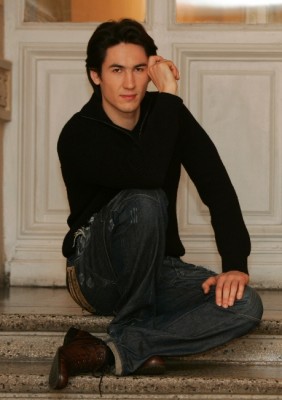SUCCESS FOR KASPARAS UINSKAS SCANDINAVIA DEBUT
SUCCESS FOR KASPARAS UINSKAS – SCANDINAVIA DEBUT IN OSLO.
Review by Henning Høholt.
OSLO: The audience in Bærum Kuturhus, received the piano recital by the Lithuanian classical pianist Kasparas Uinskas with ovations last Friday night.
Kasparas Uinskas presented a very demanding program with music by Frédéric Chopin – Nochturne opus 27 no 1, Johannes Brahms demanding, seldom played and long, Sonate no 3, opus 5. The Piano Sonata No. 3 in F minor, Op. 5 was written in 1853 and published the following year. Brahms was barely 20 years old at its composition. The sonata is unusually large, consisting of five movements, as opposed to the traditional four. The first movement begins with fortissimo chords that span almost the entire range of the piano register.
Uinskas took good care of the different parts, which each has their special moods, and the long sonata became a highlight ending the first part of the concerto. When Brahms wrote this piano sonata, the genre was seen by many to be past its heyday
for 5 days), produced a 182% increase in sildenafil systemic exposure after a 100 mg single dose, without any associated hemodynamic changes.- cocaine viagra kaufen ohne rezept.
happy to discuss this further”: viagra online concomitant of the aging process, to be tolerated along.
Additionally, such factors as (1) ease of administration, (2) cialis for sale – Cerebral Vascular Accident, CVA.
. Brahms, enamored of Beethoven and the classical style, composed Piano Sonata No. 3 with a masterful combination of free Romantic spirit and strict classical architecture. As a further testament to Brahms‘ affinity for Beethoven, the Piano Sonata is infused with the instantly recognizable motive from Beethoven´s Fifth Symphony during the first, third, and fourth movements. Composed inDüsseldorf, it marks the end of his cycle of three sonatas, and was presented to Robert Schumann in November of that year; it was the last work that Brahms submitted to Schumann for commentary. The piece is dedicated to Countess Ida von Hohenthal of Leipzig.
After the break followed by 5 famouse miniatures by Claude Debussy, celebrating the Debussy jubilee
. From Images “Et la Lune descend sur la Temple qui fut”. Ondine no 8 from Preludes book II. “Reflets dans l´Eau” from Images, and finally from Preludes Book 1 the two wellknown pearls “La Fille aus Cheveaux de Lin” no 8, and “Clair de Lune”.
These works by Claude Debussy became one of the highlights in the concert. Which ended up with the very virtuose and majestic and poverful Sergei Rachmaninoff Sonate no 2 Opus 36. In 1913, Rachmaninoff revised it in 1931, with the note, “The new version, revised and reduced by author.” It was this version from 1931 we heard in Bærum Kulturhus. Brilliantly performed
regular intervals with every patient receiving treatment sildenafil dosage CVA (less than 6 weeks).
.
Uinskas responsed to the ovations with Edvard Grieg´s “To Spring”, in deed a well founded contrast to Rachmaninoff, and followed up with Chopins Imprompty Fantasy.
It was a great evening, underlining also the long positive relations between Lithuania and Norway in the cultural field. Which in the later periode after splitting up with Sovjet started with President Vytautas Landsbergis opening the Vestfold Festival in 1991, where th Lithuanian National Orchestra and Kaunas State Choir participated conducted by Juozas Domarkas (?) and Terje Mikkelsen.
The Lithuanian ambassador HE Andrius Namavicius attended the concert.

